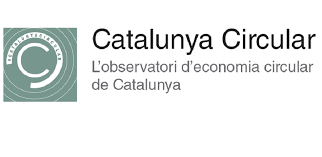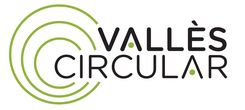Rock wool is a totally recyclable product, formed by a network of fibers that encapsulate air inside, giving it a unique insulating properties. This material is synthesized mainly from volcanic rock and other abundant minerals. ROCKWOOL, which produces rock wool for different applications and for various industries, is one of the leading companies in the sector. Next, we present the case of the Navarra factory, which focuses on the production of rock wool for its application in construction as an insulating material, through its thermal, acoustic and fire resistance properties.
The interesting part of the production process of rock wool is the incorporation of waste as a source of secondary raw materials, contributing in this way to its material recovery and adding value to the final product. The primary raw materials are mainly basalt and other abundant minerals such as dolomite. Regarding secondary raw materials, there are those coming from the production process itself and those from other industries:
The rock wool waste advantage is taken by the industry itself, where the remains of the line and the remains generated in the product cutting are considered, which are subject to a valuation in origin. It also takes advantage of the rock wool used as material for the filtering of gases, once clogged.
Other industries take advantage of slag from steelmaking and metal smelting (ferrous and non-ferrous), since it is an available waste at the regional level and has limited outputs for recovery.
According to the norm ISO 14021, ROCKWOOL declares that the rock wool synthesized in Navarra contains approximately 60% of recycled material, whose 59% is pre-consumption, rescued during a manufacturing process. The remaining 1% is post-consumer recycled material, which consists of material used at homes or commercial and industrial facilities. The post-consumption includes the returns of materials from the distribution chain and the remains recovered from the buildings demolition. However, the latter is only applied in Countries where the system for recycling construction materials is more widespread, and where rock wool has been used as an insulation material in buildings.
The Navarra factory has an internal recycling process that incorporates waste rock wool, slag, basalt fines and small amounts of cement, used as a binding agent. All this material is compacted forming recycling bricks that, once melted, are transformed into new rock wool of high quality. It is worth mentioning that only the secondary raw material of reduced size is used for the elaboration of the recycling bricks, leaving the larger fractions as direct inputs into the process.
Below a summary table illustrates the approximate composition of the finished product. However, it should be highlighted that the materials and percentages of raw materials usually vary according to their availability.
|
Finished Product Composition |
|
|
Material |
% Weight |
|
Abundant minerals and secondary raw materials |
89% |
|
Bonding agents |
3% |
|
Oils |
< 0,2% |
|
Packaging |
8% |
The production process, is characterised of melting raw materials at temperatures above 1600ºC. Once a liquid mass is obtained, it is converted into fibers by means of a centrifugation process, immediately afterwards the fibers are impregnated with agglomerating additives and impermeable oils in order to get the rock wool mass. Finally, a cutting process is carried out to give it the desired dimensions.
According to the environmental product declaration, another noteworthy aspect that highlights ROCKWOOL's commitment to the environment is the use of rainwater in the process, and the recovery and reuse of 100% of industrial water, contributing to the reduction of consumption and wastewater discharge. At the same time, as far as the emissions to the atmosphere are concerned, the self-imposed limits by the company have a higher level of demand than what is established in the current regulations on air quality.







